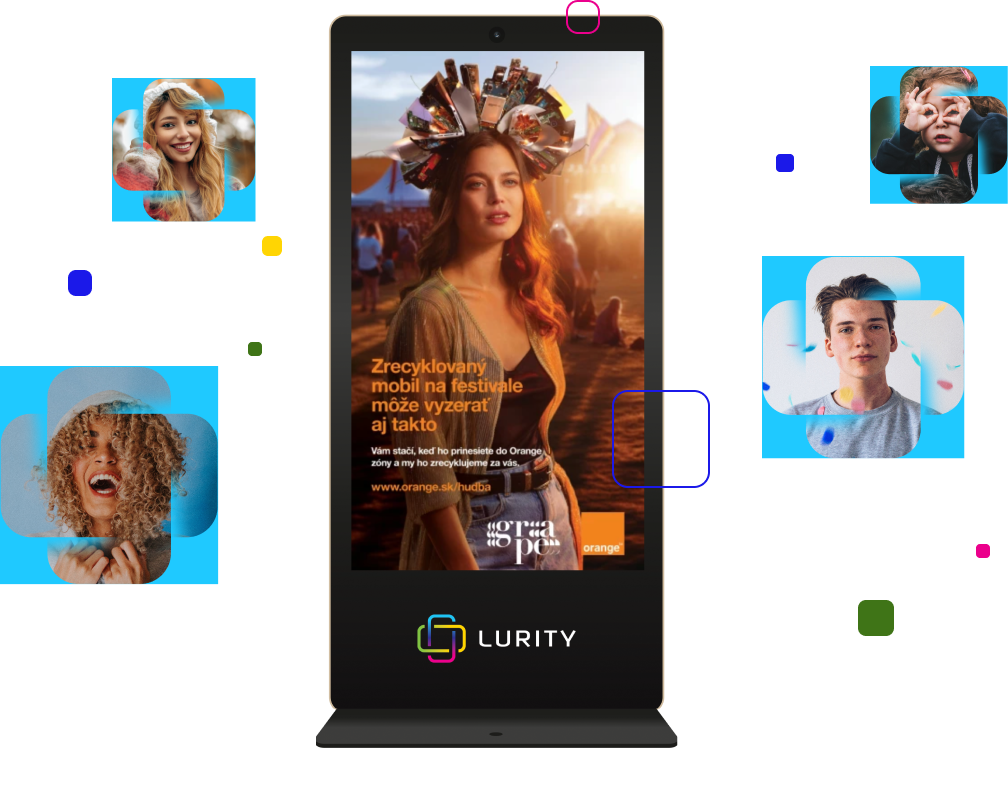Out of home has long been characterised in the media lexicon as a "booster/ or reinforcing medium", i.e. a medium that can augment and reinforce advertising running in other media channels. However, recent developments in the advertising business make it clear that it is time to start talking about OOH for what it really is, a highly cost-effective and, in fact, very safe way for a brand to reach and engage audiences on a large scale. In Slovakia, OOH currently accounts for 5.8% of total advertising spend.

Naturally, OOH advertising has struggled in the past to siphon off the much larger budgets of TV and digital. After all, what better way to complement the isolated digital experience of TV, online and mobile advertising than with bold, life-size messaging in the physical world?
This logic has consistently attracted the attention of OOH/DOOH advertisers, who are spending the largest and growing spend, including Amazon, McDonald's, Apple, Google, AT&T, and Disney (US), which spend disproportionately on OOH.

Although the pandemic also dealt a temporary blow to OOH advertising, we are finally seeing the return of audiences again as cities are reopening and multiple sources confirm that vehicle and pedestrian activity has returned to pre-pandemic levels, or in some cases even higher.
OOH vs. TV: More reach at lower cost
The long-term fragmentation and decline of television audiences, caused first by cable television and then by the growth of online video, are historically documented. The lack of new content production triggered by COVID, coupled with the explosion and quarantine, have created decent negative PR for TV advertising.
Video consumption is becoming a personalized, interactive, on-demand experience - which is great for consumers, but not so much for advertisers looking to achieve mass exposure.
If we are talking about DOOH / OOH, this medium on the other hand can provide virtually 100% reach and for a much lower amount, almost a fraction of the price of TV commercial spots. From a media planning perspective, this is a highly effective way to reach a mass audience with high frequency and at low cost. That is why it has long been used as a broadcast medium to announce events such as movie premieres, product launches and store openings. Thanks to the quality, the size of the area, and also the video capability, advertisers are leveraging the reach and power of the medium to drive deeper brand engagement and even conversion.
OOH vs. online.
The online medium has long struggled with viewership, fraud and transparency issues. From breaking news to bots to ad blockers, the underlying problem is that brands themselves simply don't have control over the medium. Brands will continue to advertise online, but there will always be issues and risks that are associated with the lack of control in online advertising.
In contrast, OOH gives advertisers full control. In every other medium, the agreement between the consumer and the media operator is "you're here for the content, but you have to digest the ads", so the advertiser has no control over the overall content in which their ad finds itself and the context in which they are relied upon to acquire their audience.


OOH is the only major advertising medium that is not content-based. Why? Because the status quo is: "you are here and the ads are here". The OOH/programmatic DOOH advertiser has full control over the message, including the choice of time, place and physical context in which to deliver it.
OOH vs. mobile: immersive, life-size experiences vs. disruptive, small-scale experiences
The growth and use of smartphones has skyrocketed, and quarantines and social distancing have continued to increase the amount of time we spend on mobile. However, mobile advertising is often quite far removed from the experiences that most brands want to deliver to their consumers.
OOH is a medium that delivers memorable, life-size messages in the real world. From eye-catching billboards, to new digital OOH formats in the places where audiences are most. Research shows it is also more memorable than any other channel.
OOH / DOOH creativity often offers great and witty implementations that are simply impossible within any mobile device. And thus, it doesn't hurt at all that experiential marketing can be easily integrated into OOH campaigns.

DOOH / OOH vs. social networks: Reaching consumers with authenticity and trust
Social media advertising has become a staple for brands, driven by unprecedented data acquisition and targeting capabilities. However, recent developments around topics ranging from politics to COVID-19 to racism have raised new questions and challenges around social advertising. Social media is thus a prime example of how the medium is becoming the message and beginning to drown out the advertising messages that brands are interested in communicating.
On the contrary, OOH/DOOH is all about the message. Although it may be aimed at specific audiences, places and physical contexts, the medium itself is objective. It is not an avalanche of information, rolling in different messages of political opinion. It is simply real advertising in the real world. Unsurprisingly, research has shown that OOH is more trusted than any digital medium, including social media.
As advertising finds its own 'new normal', brands will increasingly take notice of the advantages that OOH offers over other channels. As they do, OOH will emerge from the shadows of other media channels and take its place as one of the primary channels in the marketing mix, offering advertisers the most cost-effective and brand-safe way to reach and engage audiences on a large scale.

Try it effectively



